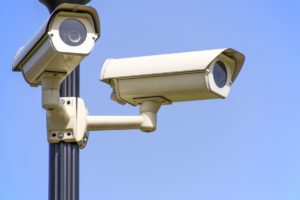Welcome back to Part II of our series on what you should look for in a home security camera. Well, we’ve covered all the basics, but what’s next? Just like anything else, investing in a comprehensive home security camera system depends on your lifestyle, features you want, and desired level of protection. But what are you to look for? Let’s look at all of the specifics surrounding a comprehensive camera-based home security system.
What is the Field of View?
A camera’s field of view can range from 90 degrees to 140 degrees. If you want to keep an eye on your backyard or a large room, you need to ensure you camera has an adequate field of view. Conversely, if you are simply watching a porch or entryway, then an narrow field of view should work just fine.
Does It Have Night Vision?
Most home security cameras offer some sort of night vision. If you are looking for a 24/7 monitoring solution, then you need night vision. The same goes for if you live in a rural area or anywhere that animals roam around at night? Furthermore, do you live in a rural area? Consider hat raccoons and other nocturnal animals make noise at night. To prevent yourself from having a heart attack every time an animal moves, you may need a night vision camera solution.
What is the Resolution?
We are all into 4K video and fancy television sets, but these items are not necessarily practical for security camera applications. Depending on the resolution of your camera, you may need to make some difficult bandwidth and storage decisions. Security cameras often range in resolution from 480p to 1080p. If you are installing cameras in a high-crime area, you may need a better resolution. This ensures your system can make out faces should something unfortunate occur.
How Does It Perform in Low Light?
Dimly lit areas operate in a gray space between day and night. As a result, it is important to consider that dimly lit areas around your house may not trigger the night vision capabilities of your camera. If you are trying to capture dimly lit areas, consider a wide aperture camera, which can absorb a lot more light. Rather than relying on shadows and granular video, a low-light camera can offer a far higher level of resolution.
Does It Detect Motion?
Motion detection will generally alert a home owner any time there is movement in a specified area. This could encompass everything from a post office worker to a burglar, vandal or wild animal. If you are investing in a motion detecting camera, you need to know whether it turns 90 degrees or 270 degrees. Certain models of outdoor camera also come with lights that will activate and trigger a panning motion on the camera should the motion boundaries detect movement. The movement boundary can usually detect movement from a few feet to up to 100 feet out.
Does It Have Audio Support?
It is important to consider whether or not you need audio. Why? Because not all cameras can record audio. Even fewer record two-way audio. If you want to communicate with someone who is in front of the camera, you must ensure your camera solution has two-way audio. This could range from asking a delivery driver to leave a package to ensuring you know your visitor. Some security camera solutions can even detect an animal and let out a loud sound to scare them away.
Is There a Mobile App?
If you are investing in a modern home security system, why not invest in one that allows you to access a live feed from your computer or smartphone? Connecting a camera to a mobile app is not always simple. But you can easily do it with the help of the company you are investing in.
Join us next week when we dive into the third part of our important series surrounding home security system cameras!

